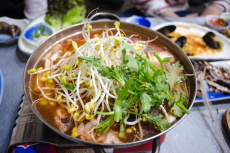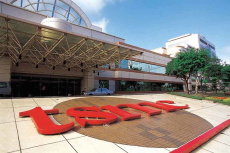Food glycemic index tables: what you need to know to control glucose spikes
One of the keys to a healthy diet is that it helps prevent uncontrolled glucose spikes in the blood. For this, the glycemic index tables of foods can be of great help.
The alteration of glucose or sugar levels in the blood is one of the most common health disorders and a risk factor for many diseases, such as obesity, diabetes and cancer.
What is the glycemic index or GI?
The glycemic index (GI) is a numerical score assigned to each food based on a scale that describes how carbohydrates in that food affect blood glucose. It is a scale that goes from 0 to 100, where 100 is the value given to pure glucose. Thus, the lower the glycemic index of a food, the slower the increase in blood sugar level after eating it.
In general, more processed foods have a higher GI than unprocessed foods, while foods with a high percentage of fiber or fat have a lower GI.
Low glycemic index foods
When is a low glycemic index considered? Foods with a low glycemic index are those with a GI below 55:
• Low GI (less than 55): The foods in this group are very healthy for our body, because they have a low index and provide us with the necessary sugars, but without drastically increasing blood glucose levels.
• Medium GI (56-69): Foods grouped in this category should be consumed occasionally or in moderate amounts in the diet.
• High GI (over 70): We must be careful with these foods as they increase blood glucose levels abruptly and we must eliminate them from our diet, consume them occasionally or take them together with foods very rich in fiber.
Glycemic index of foods: tables
To make a good selection of foods you need the help of the glycemic index tables (we attach them below). You just have to prefer the foods that rank at the top over those that rank at the bottom. If you want to consume those with a higher GI, you have to do it in small portions and accompanied by others foods very rich in fiber, in proteins or at healthy fats.
Glycemic index of fruits: table
| FRUITS | Glycemic index |
|---|---|
| Blueberries | 25 |
| Cherry | 25 |
| Strawberry | 29 |
| Dried apricot | 31 |
| Fresh apricot | 34 |
| Plum | 35 |
| Apple | 36 |
| Orange | 43 |
| Peach | 43 |
| Kiwifruit | 47 |
| Grapes | 49 |
| Handle | 51 |
| Cherimoya | 54 |
| Banana | 58 |
| Melon | 65 |
| Pineapple | 66 |
| Raisins | 66 |
| Date | 70 |
Glycemic index of vegetables: table
| VEGETABLES | Glycemic index |
|---|---|
| Chard | 15 |
| Broccoli | 15 |
| Onion | 15 |
| Mushroom | 15 |
| Spinach | 15 |
| Lettuce | 15 |
| Cucumber | 15 |
| Green pepper | 15 |
| Mushrooms | 15 |
| Aubergine | 20 |
| Garlic | 30 |
| Raw turnip | 30 |
| Beets | 30 |
| Tomato | 30 |
| Carrot | 30 |
| Radicchio powder | 40 |
| Pumpkin | 75 |
| Cooked turnip | 85 |
| Cooked carrot | 85 |
Glycemic index of dairy and vegetable drinks: table
| DAIRY AND VEGETABLE DRINKS | Glycemic index |
|---|---|
| Skyr | 30 |
| Almond drink | 30 |
| Non-hydrolyzed oat drink | 30 |
| 65 | |
| Pineapple | 66 |
| Raisins | 66 |
| Date | 70 |
Glycemic index of vegetables: table
| VEGETABLES | Glycemic index |
|---|---|
| Chard | 15 |
| Broccoli | 15 |
| Onion | 15 |
| Mushroom | 15 |
| Spinach | 15 |
| Lettuce | 15 |
| Cucumber | 15 |
| Green pepper | 15 |
| Mushrooms | 15 |
| Aubergine | 20 |
| Garlic | 30 |
| Raw turnip | 30 |
| Beets | 30 |
| Tomato | 30 |
| Carrot | 30 |
| Radicchio powder | 40 |
| Pumpkin | 75 |
| Cooked turnip | 85 |
| Cooked carrot | 85 |
Glycemic index of dairy and vegetable drinks: table
| DAIRY AND VEGETABLE DRINKS | Glycemic index |
|---|---|
| Skyr | 30 |
| Almond drink | 30 |
| Non-hydrolyzed oat drink | 30 |
| Soy drink | 34 |
| Whole milk | 35 |
| Plain yogurt | 35 |
| Ensure. Protein Shake | 50 |
| Condensed milk | 61 |
| Rice drink | 85 |
Glycemic index of cereals and starchy foods: table
| CEREALS AND STARCHY FOODS | Glycemic index |
|---|---|
| Carob flour | 15 |
| Almond flour | 20 |
| Amaranth | 35 |
| Cooked Wild Rice | 35 |
| Chickpea flour | 35 |
| Lentil pasta | 35 |
| Quinoa | 35 |
| Oats | 40 |
| Oat flakes | 40 |
| Whole wheat pasta | 40 |
| Rye flour | 45 |
| Wholegrain spelled bread | 45 |
| Cooked brown rice | 50 |
| Basmati rice | 50 |
| Sweet potato | 50 |
| Industrial cereals with fiber. All bran type | 50 |
| Soy noodles | 50 |
| Sugar Free Cookie | 50 |
| Oatmeal | 56 |
| Wheat pasta | 60 |
| Cooked cous cous | 65 |
| Digestive Biscuits | 65 |
| Canned corn | 65 |
| Toasted corn (kikos) | 65 |
| Whole wheat bread | 65 |
| Boiled potato with peel | 65 |
| Cooked white rice | 70 |
| Sweetened industrial cereals | 70 |
| Maria cookies | 70 |
| Prince type cookies | 70 |
| Rice Flour | 70 |
| Wholegrain spelled flour | 70 |
| French fries | 70 |
| Wheat flour | 75 |
| White bread | 75 |
| Precooked white rice | 85 |
| Baked potato | 95 |
Glycemic index of legumes and nuts: table
| LEGUMES AND NUTS | Glycemic index |
|---|---|
| Lupins | 15 |
| Roasted peanuts | 15 |
| Fresh broad beans | 15 |
| Soy | 15 |
| Almonds | 15 |
| Hazelnuts | 15 |
| Walnuts | 15 |
| Cashews | 25 |
| Pumpkin seeds | 25 |
| Cooked lentils | 30 |
| Cooked chickpeas | 35 |
| Cooked white beans | 35 |
| Sunflower seeds | 35 |
How to lower the glycemic index of foods
There are factors related to food preparation and intake that affect the glycemic index:
- The presence of fiber works as a barrier that slows down the absorption of carbohydrates. The more fiber our plate contains, the more the overall GI is reduced. That's why whole foods have a lower GI than refined ones. In addition, the skin of plant foods is an important source of fiber and if we eat it, the GI will be lower. A good example of this is that skin-on potatoes have a lower glycemic index than peeled potatoes. The skinned fruit also has a lower GI than the peeled fruit.
- Serving size influences glycemia (blood glucose level). If you double the ration, the effect is also doubled. This is especially important in the case of fruit. One piece does not significantly affect blood sugar, but a whole source of fruit does.
- The cooking point affects the GI. To prevent it from firing, always cook al dente. Don't let them pass you by neither the pasta, nor the rice, nor the potatoes.
- Temperature: An easy way to lower the GI of starchy foods is to chill them after cooking. Leave the pasta, rice, oatmeal or potatoes to rest for a while in the fridge once they are cooked.
- The point of maturation: the longer the ripeness, the more GI. Always choose the fruit at its optimal ripeness point,
- Pastification is an industrial process that reduces the GI of certain types of pasta. To benefit from this, choose long pasta such as spaghetti or tagliatelle instead of macaroni or rigatoni.
- Another simple way to reduce the GI of foods is to company them with healthy fats and proteins. This is known as wrapping carbohydrates.
- Whole foods are absorbed more slowly than juices, purees, or creams.
Recommended Articles on Blood Glycemic Control
- Glycemic index, it helps you but it can cheat
- What is the glycemic load and how does it differ from the glycemic index of foods?< /a>
- 8 energy foods with low glycemic index
- In the book Habits that will save your life (Editorial Planeta) you will find many more recommendations to control the glucose, inflammation and stress.









